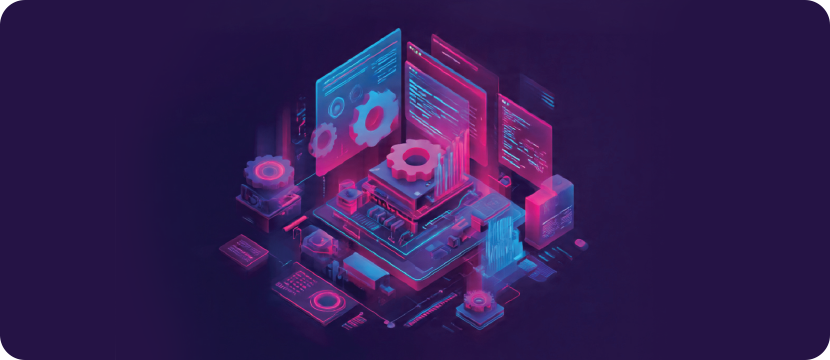

Late on a Friday evening, while most of the staff has already left for the day, a regional supply chain manager at a global food brand is juggling a dozen spreadsheets, trying to reconcile an avalanche of distributor claims. He needs to check the ERP system to match orders and invoices, logistics records for proof of delivery, and finance systems to assess the payment status. What should’ve taken mere hours has dragged into a week-long exercise simply because the systems don’t talk to each other.
For decades, this was the norm in Global Business Services (GBS). In fact, for much of its history, GBS has been like the engine room of a ship – reliable; but largely hidden from view and driven by painstaking effort. In the Consumer Packaged Goods (CPG) industry, GBS began as a way to centralize tasks and reduce cost. Finance, HR, procurement, and order processing were consolidated into hubs that delivered scale, but not strategy. Automation plateaued at deterministic workflows that were undoubtedly valuable but limited in scale.
But today, the CPG enterprise is asking their GBS providers to do more: the mandate has expanded from efficiency to agility, from savings to revenue impact.
Why Agentic AI Changes the Curve
Traditional automation tools codified the obvious; bots could process routine invoices or route basic orders, but they broke down in the face of exceptions. Every deviation, from a missing proof of delivery to a mismatched unit price, triggered human intervention, creating bottlenecks that kept automation capped at roughly 40%.
Agentic AI alters this curve significantly. Instead of following static rules, agents can reason, collaborate, and access a more dynamic arsenal of alternative actions, only escalating to a human in the loop when all viable options are exhausted. This ability to work dynamically with both structured and unstructured data, and to continuously improve through feedback loops, is what makes the core difference.

From a technical standpoint, agents combine two core capabilities that deterministic tools lacked:
- They can autonomously pull data from ERPs, CRMs, logistics systems, and even unstructured sources like email or scanned documents, building a much fuller picture before acting.
- Using this data in concert with reasoning engines, machine learning programs and generative AI, agents can handle a much wider variety of exceptions. For example, reconciling an invoice discrepancy by validating shipping data or cross-checking contract terms.
For CPG enterprises, this shift can have a dramatic impact on the growth levers of the business. Automation rates that were once capped at 40% are now reaching 70–80% in live deployments. That means faster order-to-cash reconciliation, shorter settlement cycles, higher Net Promoter scores, and fewer lost sales from order delays or avoidable errors.
Crafting Fragmented Data into A Strategic Asset
McKinsey states that, “For CPG food and beverage enterprises with $10 billion in revenue, the potential gains on implementing digital and AI successfully and comprehensively across the full value chain lies between $810.0 million and $1.6 billion, driven by both top-line growth and productivity gains.”
So far, the critical barrier in CPG digital transformation hasn’t been intent but integration. Enterprises have never lacked the will to modernize; what they’ve lacked is the ability to bring together data that is scattered across silos. Distributor claims, retailer sales, ERP records, procurement contracts, and supplier inputs all arrive in dozens of formats, often through fragmented point solutions or, worse, fragile spreadsheets stitched together with macros and manual updates. This heterogeneity has turned data from a potential advantage into a liability, slowing down decision-making and forming a breeding ground for errors.
Rigid data uniformity is neither realistic nor scalable in CPG, but harmonizing heterogeneity is a much more viable alternative. The new playbook is to build configurable pipelines that can ingest, transform, and reconcile disparate formats, creating decision-grade signals while preserving the richness of each source. Unified platforms such as EdgeVerve AI Next paired with cloud-native infrastructure and data modernization kits have now made this more pragmatic approach possible at scale.
The Unified Platform Blueprint
What kind of components are platforms built with? Today’s GBS hubs are converging on a four-layer stack. This is the foundation behind the unified platform approach and its ability to help enterprises create coherent insight in real-time from the deluge of incoming data.
- The Ingestion Layer: On a foundational level, the platform ingests and harmonizes data from hundreds of sources, including legacy ERPs, modern SaaS platforms, and cloud applications, all in pursuit of a single, trusted source of truth.
- The Interpretation Layer: Leveraging poly-AI engines to blend ML, document AI, generative AI, and agentic AI to detect patterns, resolve exceptions, and drive more impactful decisions.
- The Injection Layer: Codifying processes, exceptions, and building guardrails while directly injecting AI-driven actions into workflows and seamlessly moving to straight-through execution.
- The Interaction Layer: Single pane views for orchestration, oversight, and engagement of agents. This helps outcomes reach people through intuitive interfaces, whether frontline employees, senior executives, or a customer, simplifying engagement, speeding adoption, and placing the relevant intelligence at everyone’s fingertips.

Proof In Practice: Early Wins for AI In CPG
Orchestrating agentic AI via a unified platform within GBS allows CPG enterprises access to tangible pool of proof points that build confidence with the organisation. Early deployments in high-volume, cross-system processes can demonstrate quick wins while laying the foundation for executive buy-in.
What do the results look like?
- Tail-Spend Procurement: Low-value, high-volume purchases under $100k can now run agentically end-to-end, from tender to negotiation to award.
- Order Lifecycle Acceleration: AI case management can cut cycle times by up to 98% for order processing, directly impacting revenue by reducing lost sales.
- Supply Chain: Unified platforms enable demand-sensing agents to detect demand signals in real time across hundreds of touchpoints, using that data to automatically optimize production and distribution plans.
- Compliance: Perpetual KYC for distributor networks, automated trade promotion audits, and error-free contract scanning let talent be redeployed to roles that demand greater creativity and relationship management.
While the potential is there, this evolution also depends on embedding robust guardrails and governance. Responsible AI frameworks, transparent decision lineage, and policy-driven oversight are the best way to build automation that scales compliant and stays compliant.
BOX: The Leadership Agenda to Craft the Next with AI
- Invest in a system of action for GBS, not just a system of record.
- Anchor on high-volume, cross-system use cases where agentic AI proves value fast.
- Treat people as orchestrators and trainers of agents, instead of a purely execution layer.
- Bake responsible guardrails into every deployment from day one.

Loved what you read?
Get practical thought leadership articles on AI and Automation delivered to your inbox


Loved what you read?
Get practical thought leadership articles on AI and Automation delivered to your inbox
Redefining the Core: GBS as a Strategic Growth Engine
Clearly the era of GBS as a below-deck efficiency engine is over. And the next chapter? GBS as a value office that drives agility, customer experience, and growth across the entire CPG enterprise.
Tomorrow’s GBS hubs will run on their own system of action, complementing traditional systems of record. This system of action will give leaders real-time visibility into processes, bottlenecks, and outcomes.
GBS will also become a source of innovation and companies will work with tech partners to design a unified, AI-powered GBS platform tailored for their operations.
Finally, skills and culture will transform. Freed from repetitive grunt work, employees will make the shift to exception management, empathy-driven customer service, and AI stewardship.
The result is a GBS core that is not only more efficient but also strategically aligned with market-facing goals that are unique to the CPG industry.
Disclaimer Any opinions, findings, and conclusions or recommendations expressed in this material are those of the author(s) and do not necessarily reflect the views of the respective institutions or funding agencies.






